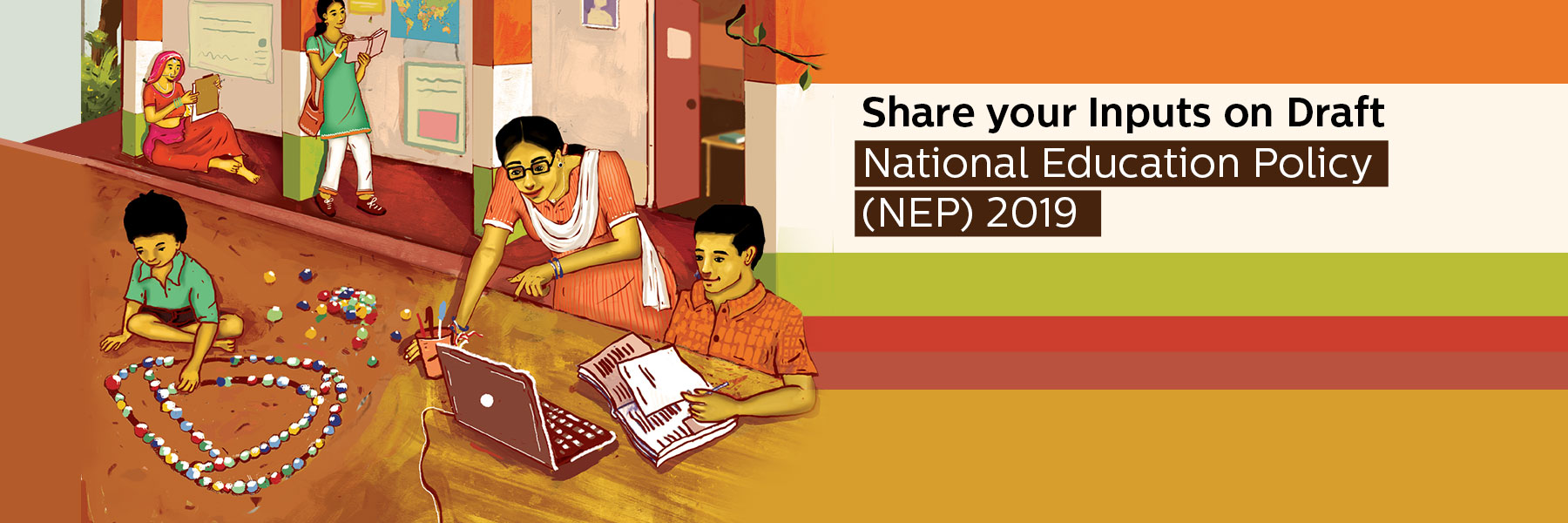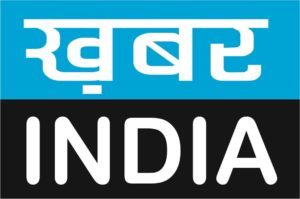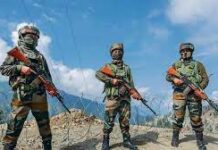A survey by the National Statistical Office found that only 23% of urban population and only 4% of rural Indians have access to computers. The survey further found that while only 21% of persons of rural Indians of the age group of 15-29 can operate a computer, a good 56% of their urban counterpart can do so. In the context of the policy proposed by the government, this is a hurdle that must be addressed pre-deployment and not post deployment.
writer: Bhupati Prasad Pandey, IAS (Retd)

The clarion calls for “Skill, re-Skill and upskill” could not have come a day later. With skilled performers laid off and unskilled workers seeking any employment to survive the chaos, the emerging global scenario is grim. For India, the situation has emerged as a challenge and an opportunity to pole-vault itself into one of the three leading economies of the world.
According to a study published in the Lancet journal, India’s population is expected to peak at 1.6 billion in 2048 and would decline steadily to 1.09 billion by 2100. Until recently, India boasted about having the world’s youngest working population. We must ensure the new education policy works to build a strong workforce that can grab the digital age by the scruff of its neck. In 2017, India’s working age population was 762 million and is slowly tapering off and is expected to come down to 578 million in2100. Further, according to official statistics nearly 4,00,000 of 650000 villages are covered by optical fiber network and most villages have electricity. However, the issue at hand is combining a relatively stable infrastructure with the education policy to drive the country’s development along with individual’s knowledge upgradation. The time to act towards a holistic education reform is now and we have taken the first step, but it should not be the only step.
Since only the broad contours of the NEP are in the public domain, it would be inappropriate to speculate on the shape of things that would emerge on implementation. However, it must be borne in mind that we are required to work within a time frame of just two decades to scale the development ladder. The urgency of purpose must get reflected in the implementation of the policy.
To understand where we should go, we need to know how we got here. Post-independence while the country moved with speed in many of the sectors and ticked many parameters successfully, it has lagged in many others. Unemployment, casual employment or under employment in India can be attributed to the continuation of pre-independence educational system and the consequent flawed perspective of life, family, and country.
The Macaulayvian system of education was created to divide the Indian social structure, and “civilize the natives”. It served the interests of the British empire and did little to carry the masses into the modern world. Gandhiji saw through the British game and castigated them in a speech at the Round Table Conference of 1931. He said, “Literacy is not my goal it is the all-round development of a child that we need to work towards.” However, the same system was inexplicably retained post-1947 and all it did was widen the knowledge and economic divide between the educated and semi or un-educated in the country, and men and women. Consequently, the village folk, poorer sections of society and women were treated as second-class citizens to the city dwellers and men folk. Despite being the backbone of the economy, agriculturists were looked down upon and shop floor personnel were wished off. Slowly education became a luxury not a right of the people.
Come 1984, India’s young Prime Minister introduced the most profound reform to the Indian education system since independence. The C- Dot (Centre for Development of Telematics) was set up in India and, a new framework was introduced for science, technology, and allied industries. While it took time to show its value, the reforms catapulted India into a major player in the IT sector. Indian became the hub for outsourced IT work and the Indian Silicon Valley, Bengaluru, thrived with new engineering graduates joining.
Thirty-six years later, the Indian Government has introduced the New Education Policy and seeks to bring about a revolution in the Indian education system. By breaking the gargantuan system into smaller blocks with a greater emphasis on technical skills the Indian government has begun to take steps in the right direction. Coupled with the Right to Education from the previous administration it has the potential to have a greater impact than its predecessor. Primary education, which was earlier not given much importance, has been given its due and the contours of India’s culture and heritage has formed part of the curriculum. The focus on digital skills and computer literacy is made front and center in the policy to create a digitally dexterous workforce for the digital century. While these goals and the broader policy outline is commendable there are some inherent challenges to the correct implementation of the NEP.
Starting with who runs the education system in India. The matter of educational autonomy is one that needed addressing but has been neglected once again. Governments come and go, changing the syllabus and coursework as they please to suit their political agenda, but the world does not pause for us. The autonomy of the Indian education boards is something that is needed to avoid an additional layer of bureaucratic entanglement in the development of our youth. The autonomy will provide more flexibility in developing the syllabus and changing it as the tide of the world changes. However, just like in previous policy changes, the government continues to influence the education curriculum to suit its agenda and not its calling.
The most important aspect of any education policy however are the teachers. Of the nearly 13 lakh schools in India, one lakh of them are single teacher schools. Separately one amongst six teachers is untrained and unable to teach children the basic skills. The need for an Indian Teaching Service or a body that fulfills that role remains unaddressed in this policy and has led to the spawn of millions of tuitions and coaching centers across the country. Indian teachers are woefully undertrained and under resourced to manage the children and rarely have the necessary knowledge to guide a young mind into thinking rather than “mugging”.
 On another note, there is a shadow industry of teachers that has emerged. Indian parents spend one-third of the government’s current education budget on tuitions for children with teachers outside the system. School teachers are more incentivized by such classes to teach in their premises than at the schools they are employed at, leaving the economically disadvantaged to suffer. To play devil’s advocate, the teachers are equally underpaid and in an inflating economy there are steps needed to keep food on the table.
On another note, there is a shadow industry of teachers that has emerged. Indian parents spend one-third of the government’s current education budget on tuitions for children with teachers outside the system. School teachers are more incentivized by such classes to teach in their premises than at the schools they are employed at, leaving the economically disadvantaged to suffer. To play devil’s advocate, the teachers are equally underpaid and in an inflating economy there are steps needed to keep food on the table. Further, the ratio of teacher to students is also one that needs to improve. This results in more than 50% students being unable to perform the grade level tests and many requiring assistances to name the President of India or even state the year of Indian independence. So, while the policy might fix the large system, the implementors of the system remain. This issue will also persist in future iterations of education policy so long as teachers are only seen as task masters and not knowledge imparters. Training and development of teachers to be more empathetic and digitally astute needs to be a pre-implementation consideration for any successful policy change. Else the change will be purely cosmetic with no structural impacts.
A survey by the National Statistical Office found that only 23% of urban population and only 4% of rural Indians have access to computers. The survey further found that while only 21% of persons of rural Indians of the age group of 15-29 can operate a computer, a good 56% of their urban counterpart can do so . In the context of the policy proposed by the government, this is a hurdle that must be addressed pre-deployment and not post deployment. The digital divide in India will be further enhanced by a policy that assumes widespread technology distribution in the country and will nullify the positives of this change.
 Finally, the need for vocational education must be addressed directly and given greater value and respect. Although there is a provision for “bagless days”. post high-school vocational education remains an ignored aspect of India’s education policy. The lack of focus on vocational education will continue to push Indians with limited education in to low-paying service jobs that do not help them achieve the economic mobility needed fora economically strong country. Instead of setting up of working groups of commissions or committees, government needs to reach out to the IT companies, pharma companies, biotech companies, medical fraternity, and engineering fraternity to build a vocational system for India. Many could be roped in to set up retraining of the shop floor personnel and equip them to meet the challenges in their fields in future. It should not be a daunting task as many industrial houses are already engaged in this for the benefit of their own organization — it only needs a multiplying coverage and effect. The corporate sector could, as part of corporate social responsibility expenditure provide at least four computers along with trainers to each village, to train the young and old, men and women in computer usage. Computer usage should be made an important criterion for any governmental assistance. Similar contribution, in appropriate numbers could come from municipal and other local bodies in the urban areas. Government and industrial houses could lend their support by providing their aged computer equipment, with retro fitting, to rural areas. It needs to be ensured that by the time all villages are covered by optical fiber cabling, at least three fourth of villages become computer literate and computer savvy.
Finally, the need for vocational education must be addressed directly and given greater value and respect. Although there is a provision for “bagless days”. post high-school vocational education remains an ignored aspect of India’s education policy. The lack of focus on vocational education will continue to push Indians with limited education in to low-paying service jobs that do not help them achieve the economic mobility needed fora economically strong country. Instead of setting up of working groups of commissions or committees, government needs to reach out to the IT companies, pharma companies, biotech companies, medical fraternity, and engineering fraternity to build a vocational system for India. Many could be roped in to set up retraining of the shop floor personnel and equip them to meet the challenges in their fields in future. It should not be a daunting task as many industrial houses are already engaged in this for the benefit of their own organization — it only needs a multiplying coverage and effect. The corporate sector could, as part of corporate social responsibility expenditure provide at least four computers along with trainers to each village, to train the young and old, men and women in computer usage. Computer usage should be made an important criterion for any governmental assistance. Similar contribution, in appropriate numbers could come from municipal and other local bodies in the urban areas. Government and industrial houses could lend their support by providing their aged computer equipment, with retro fitting, to rural areas. It needs to be ensured that by the time all villages are covered by optical fiber cabling, at least three fourth of villages become computer literate and computer savvy.Successful implementation of the policy would require government to step up the expenditure on education. India has ignored investing in human capital and that has been the roadblock of India’s development story. The proposed expenditure of 6% of the GDP may also be on the lower side if we keep in mind that results need to be visible within a decade’s time. We cannot afford to have disinterested teachers and professors taking care of our youth and expect them to excel and compete with the world. India does not lack the resources, a helping hand, or a challenge molds Indians to take on the world straight and square.
It is still not known but one must assume that is part of the policy to continuously test the interest, aptitude and temperament of the student and assist him/her in selection of future career. The need for psychological analysts in schools must be integral to the staffing at school and degree levels to help youth to pick a career suited to them and excel in their chosen path. The course content also must be reviewed on a regular basis to take care of changes taking place around the world and expected changes in the sectors concerned. It will therefore be important to have consultative bodies for all sectors to function round the year to assist the Education Department in finalizing changes in the curriculum.
The suggestions made above would require a large number of trained, committed and outgoing manpower to build up a new, developed India whose youth would be capable to challenge the world in any field even in data science or artificial intelligence, in pharmacy, data engineering, agriculture, humanities or engineering. The key now is not NEP, but its committed and correct implementation in the stipulated time.
……………..
















